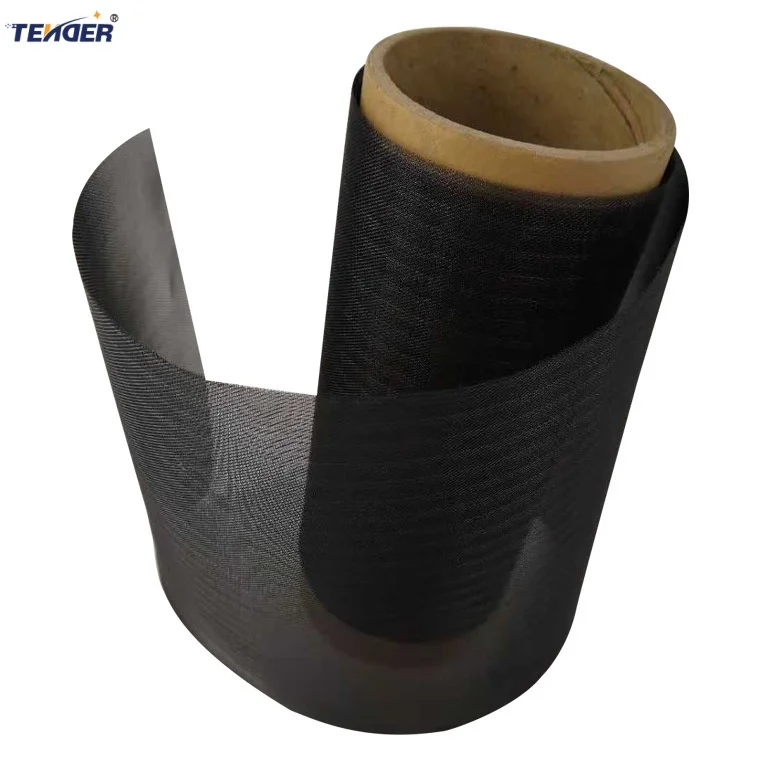If you’ve been hunting for a high-temperature screen that doesn’t blink at vacuum cycles, start with molybdenum wire mesh. To be honest, it’s one of those niche materials that quietly runs critical processes—from semiconductor furnaces to hydrogen atmospheres—without a lot of fanfare. Lately, demand is ticking up as decarbonization nudges industry toward clean heat and advanced vacuum systems. Many customers say they switched from nickel-based screens and never looked back.
Quick refresher: molybdenum wire mesh is woven from pure Mo or Mo-alloy wire in plain, twill (diagonal), or dense weaves, with square or rectangular apertures. It stays stable where steel would soften. And yes, “molybdenum mesh” is the same family—just shorter to say.

What’s Driving Adoption
Three trends stand out: higher process temperatures (think 1,200–1,600°C), cleaner vacuum environments for semiconductors and EV supply chains, and longer service intervals. In fact, buyers now ask for tighter mesh tolerances and validated purity (≥99.95% Mo) as standard, not a premium.
Typical Specifications (guide values)
|
Material |
Pure Mo (≥99.95%), Mo alloy (on request) |
|
Mesh count |
10–200 mesh (custom up to ≈300 mesh) |
|
Wire diameter |
0.02–0.50 mm (≈0.0008–0.020 in) |
|
Weave types |
Plain, twill (diagonal), dense |
|
Width |
Up to ≈1.5 m (rolls or cut panels) |
|
Operating temp |
Up to ≈1,600°C in vacuum/inert; real-world use may vary |
|
Electrical resistivity |
≈5.2×10⁻⁸ Ω·m (RT) |
|
Thermal expansion |
≈4.8 µm/m·K (20–100°C) |
|
Standards |
ASTM B387, ASTM E2016, ISO 9044 |
How It’s Made (process flow)
· Materials: powder-metallurgy Mo wire (vacuum sintered), purity verified by GDMS/ICP.
· Wire drawing and intermediate anneal to target diameter.
· Weaving: controlled tension on shuttle/rapier looms; plain/twill/dense per spec.
· Vacuum anneal/degassing to stabilize geometry and remove contaminants.
· Cleaning and flatness setting; rolled or panel cut.
· Testing: mesh count and aperture per ASTM E2016/ISO 9044; chemistry per ASTM B387; thickness and tensile checks; visual QA.
Service life: often 500–2,000 hours at 1,200–1,500°C in vacuum or argon; cycles and atmosphere matter (hydrogen can extend life but needs clean handling).
Where It Works Best
Vacuum furnaces (sintering trays, shields), semiconductor diffusion/anneal, hydrogen furnaces, powder metallurgy, glass-fiber forming, chemical filtration under corrosive/high-temp conditions, lab hot-zone screens, and photovoltaic/LED processing. Surprisingly durable in thermal shock when mesh tension is tuned.
Vendor Snapshot (real-world differences)
|
Vendor |
Certs |
Lead time |
Tolerance (aperture) |
Notes |
|
Woven Filtermesh |
ISO 9001; RoHS/REACH |
≈2–4 weeks |
±3–5% |
Strong custom weaves; vacuum-annealed stock |
|
GlobalMeshCo |
ISO 9001 |
3–6 weeks |
±5–8% |
Competitive on large rolls; fewer alloy options |
|
HiTemp Screens |
ISO 9001; lab reports |
Stock for common sizes |
±4–6% |
Good for quick-turn replacements |
Customization and QA
Options include mesh count, wire diameter, weave, panel size, annealed vs. stress-relieved, and frame mounting. Certificates of conformity, batch chemistry, and aperture/tensile reports are common. Many buyers request heat-lot traceability and vacuum outgassing data.
Case Notes
Semiconductor furnace maker: switched to molybdenum wire mesh shields (twill, 80 mesh) and extended hot-zone maintenance intervals by ≈30% over 9 months.
Glass fiber line: customized dense weave reduced particle shedding; operators reported steadier filament quality after two thermal campaigns. “Honestly smoother than our nickel screens,” their supervisor told me.
Standards and Test Data
· Conformance: ASTM B387 for Mo wire; mesh verification per ASTM E2016 / ISO 9044.
· Typical purity: ≥99.95% Mo; oxygen ≤0.02% (batch dependent).
· Flatness and count checks at 3–5 points per panel; visual per internal QA.
References:
1. ASTM B387 – Standard Specification for Molybdenum and Molybdenum Alloy Rod and Wire.
2. ASTM E2016 – Standard Specification for Industrial Woven Wire Cloth.
3. ISO 9044 – Industrial wire cloth — Woven wire cloth — Technical requirements and tests.
4. ASM Handbook: Properties and Selection of Refractory Metals & Alloys (molybdenum data).
Anping Tengde Metal Wire Mesh Products Co., Ltd. Has been dedicated to the production and research and development of wire mesh products for 30 years. Leading Vibrating Screen It is a comprehensive department integrating production and processing, distribution and wholesale. Stainless steel mesh series, wire mesh products series, and filter elements and filter materials. Wire MeshWe can also produce various special-shaped net types and deep-processed net products according to customer needs and requirements. wire mesh suppliers All our products leaving the factory have undergone strict inspection to ensure that they are 100% qualified. Filtration Screens ManufacturerThe company adheres to the business philosophy of “technology leadership and quality victory”, and has nearly a hundred MID-to-senior level professional and technical personnel. wire mesh manufacturer We have maintained long-term and good cooperative relations with large domestic oil fields, coal mines, petroleum, machinery, chemical and other units, and have established good trade relations with more than 70 countries including the United States, Japan, Russia and Australia. Anping Tengde Metal Wire Mesh Products Co., Ltd.wire mesh screens suppliers Will continue to adhere to the tenet of “customer first, integrity-based”, and with the spirit of continuous innovation and win-win cooperation, forge ahead and challenge the future.wire mesh filter manufacturers|mesh wire suppliers